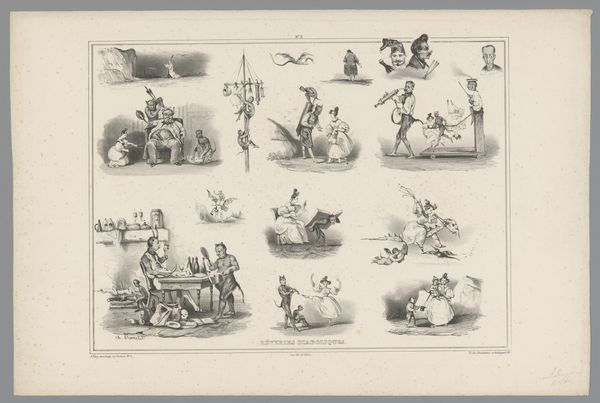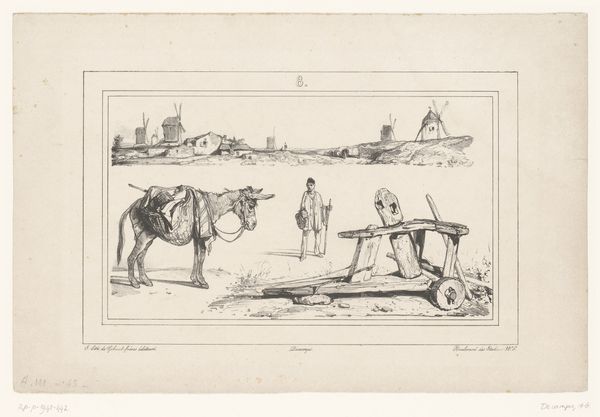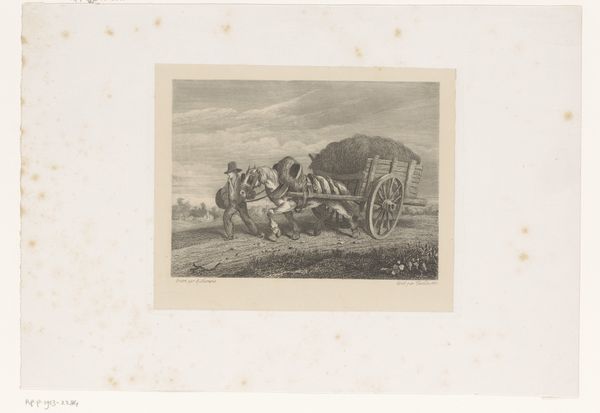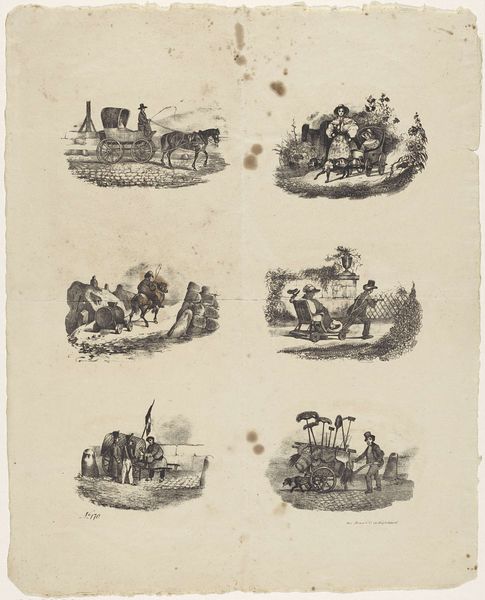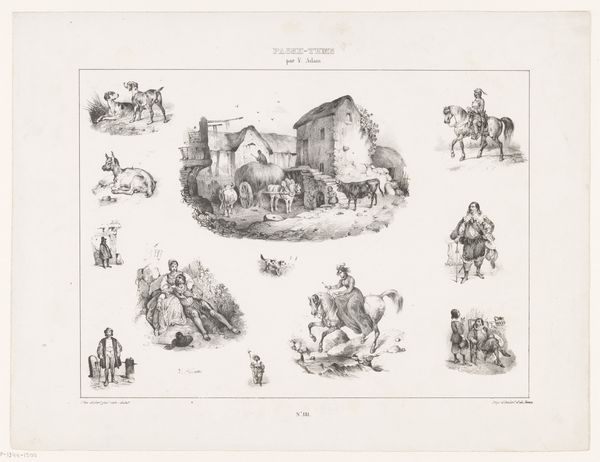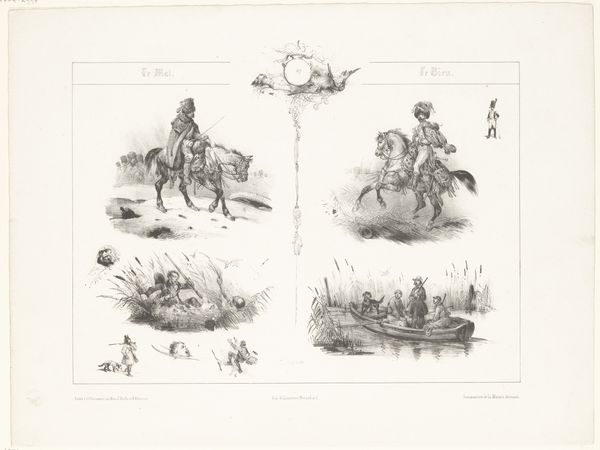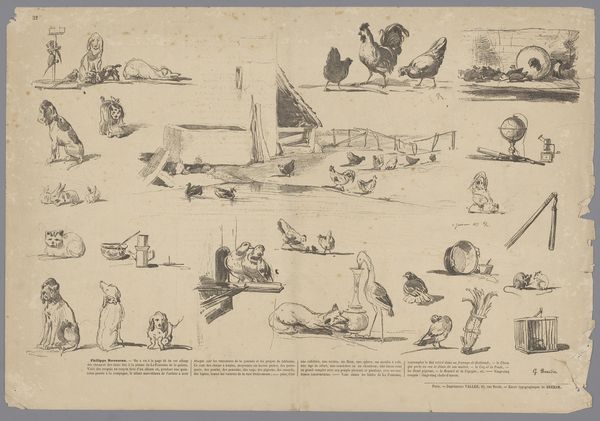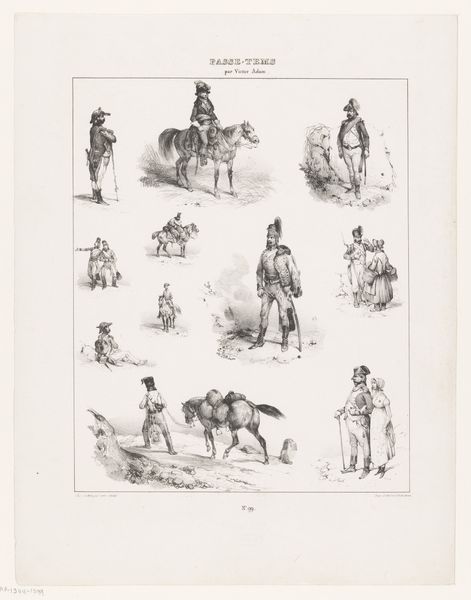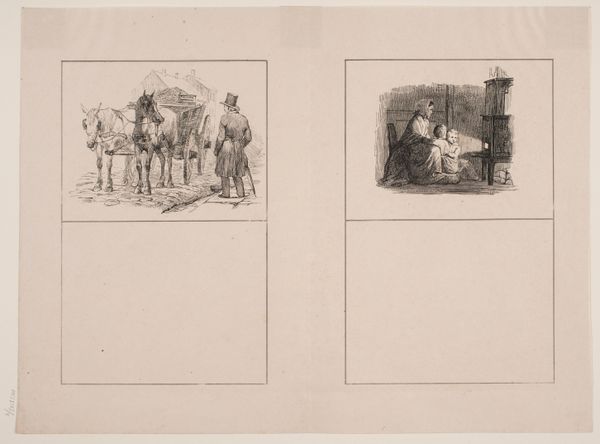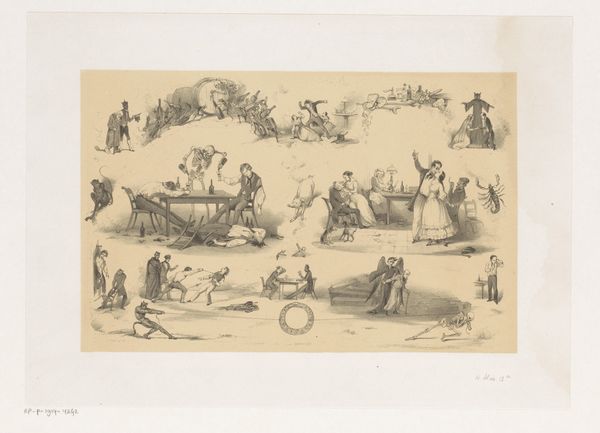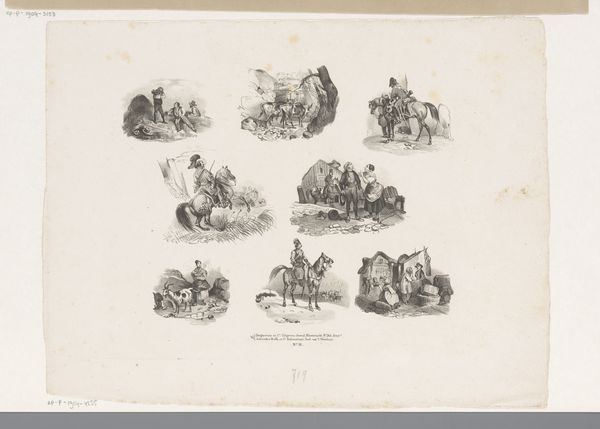
Zes voorstellingen van kinderen, jagers en andere figuren 1829
0:00
0:00
drawing, print, etching, paper
#
portrait
#
drawing
#
narrative-art
#
the-ancients
# print
#
etching
#
landscape
#
figuration
#
paper
#
child
#
romanticism
#
cityscape
#
genre-painting
#
history-painting
#
academic-art
Dimensions: height 268 mm, width 361 mm
Copyright: Rijks Museum: Open Domain
Curator: Alexandre-Gabriel Decamps created this etching, titled "Zes voorstellingen van kinderen, jagers en andere figuren" or "Six scenes of children, hunters and other figures," in 1829. It’s currently housed here at the Rijksmuseum. What are your initial impressions? Editor: It's a fascinating collection of vignettes. The etching gives it a somewhat detached, observing feeling. It almost feels like a sociological study through art, capturing snippets of 19th-century life. Curator: Indeed. Decamps was deeply engaged with social and cultural representation. Consider the groupings: children at play, a hunter with his dog, a mounted figure, each could represent a specific class or activity within the society of his time. The placement, almost like a scrapbook, suggests a comparison is intended. Editor: It does raise questions about who is seen and how. Look at the scene with the mother and child at the upper left. Is she wealthy? Is this an example of an academic approach to an everyday occurrence elevated to… what? An idyllic vision of family? We can see those representations shifting across history, and its worth understanding how those are generated, what ideas of social class are implied in this composition. Curator: Decamps moved between Romanticism and Orientalism, sometimes reflecting a fascination with the exotic and other times a grounding in observed reality. Considering Romanticism’s obsession with nostalgia and idealised representations, Decamp’s work subtly engages in contemporary politics and aesthetics. Editor: Right. Romanticism can get messy very quickly. His choices here, while seemingly innocent genre scenes, do have the potential to highlight and even re-entrench social norms. Curator: Absolutely, and exploring the narratives embedded within these scenes offers a valuable look at the cultural attitudes of 19th century Europe, especially toward children and ideas about landscape. Even the chosen medium, etching, with its reproducibility, implies a wider dissemination of these narratives. Editor: For me, that tension – the quotidian captured through an idealized and aestheticized lens – is exactly what makes this print so compelling. What a fantastic record of the 1820s to have! Curator: Agreed! Thank you. Decamps’ ability to blend genre painting with hints of broader cultural narratives is quite striking here, I think. Editor: Agreed, always fascinating to examine what art tells us about our cultural values.
Comments
No comments
Be the first to comment and join the conversation on the ultimate creative platform.
